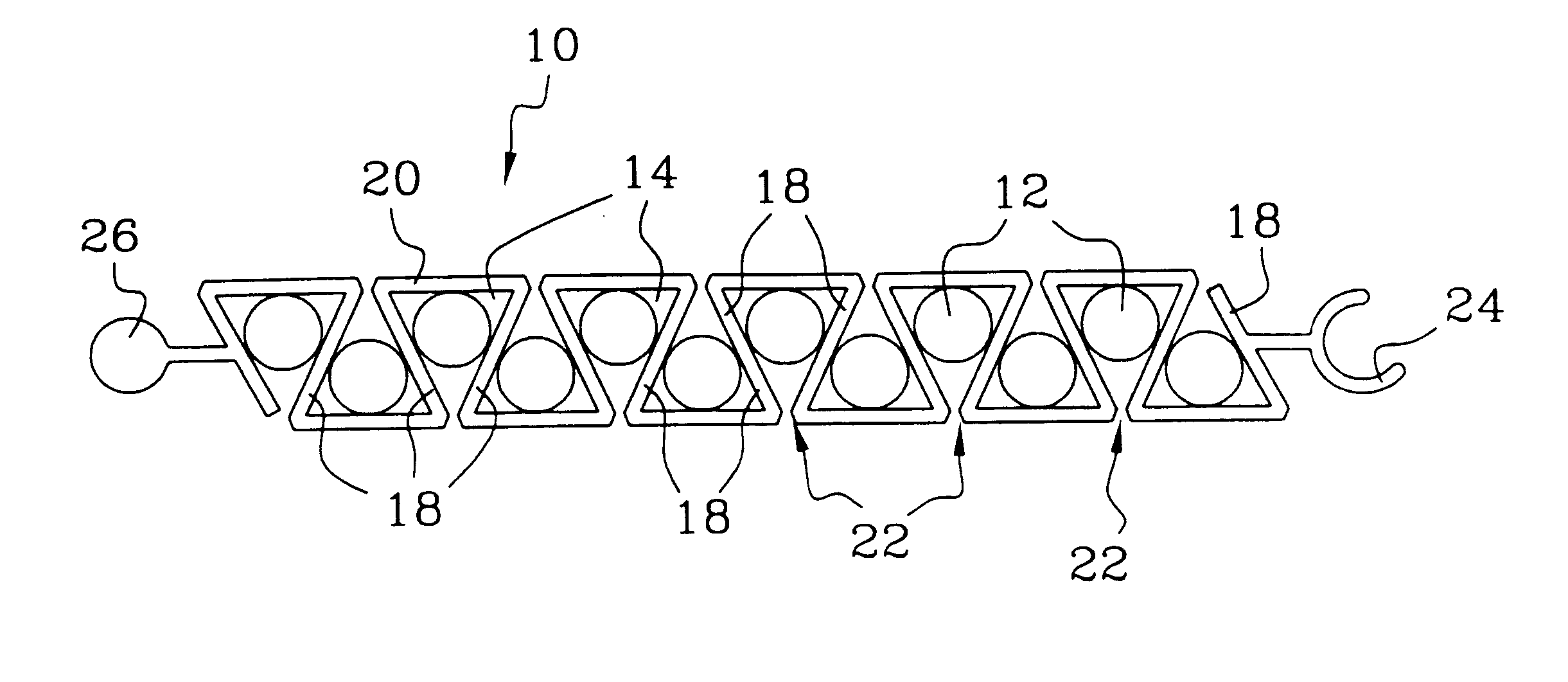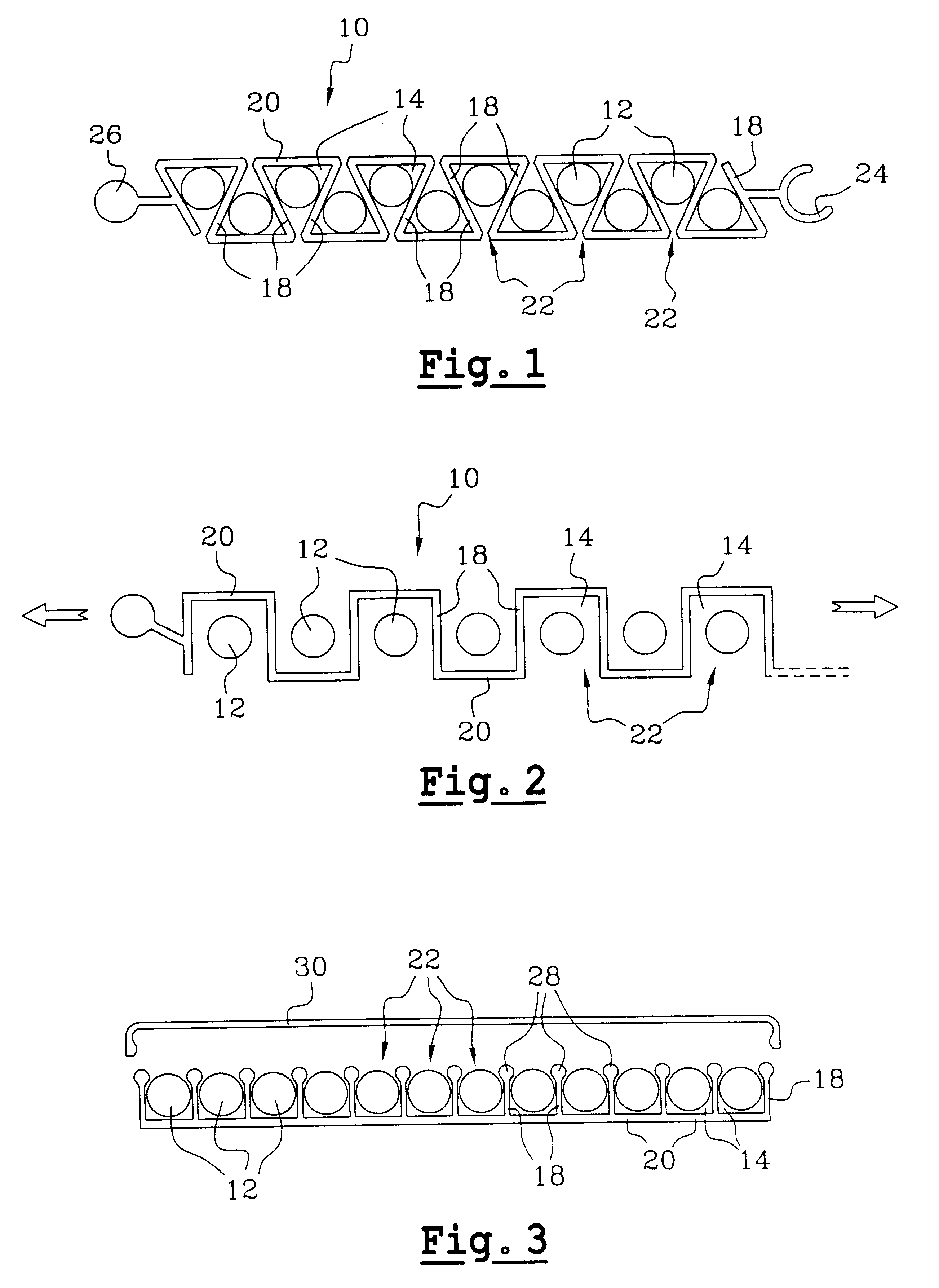Support for small-diameter filamentary elements and a bundle of filamentary elements held together by the support
a technology of filamentary elements and support, which is applied in the direction of insulated conductors, cables, instruments, etc., can solve problems such as harmful thermal stresses, and achieve the effect of facilitating access
- Summary
- Abstract
- Description
- Claims
- Application Information
AI Technical Summary
Benefits of technology
Problems solved by technology
Method used
Image
Examples
first embodiment
FIGS. 1 and 2 show a support 10 constituting the invention for supporting small-diameter filamentary elements 12 having a diameter that is less than or equal to one millimeter.
In the example shown, the filamentary elements 12 are conventional optical fibers for use in a telecommunications network, for example. The optical fibers 12 are made out of an inorganic material or a synthetic material. An inorganic type optical fiber comprises, for example, a doped silica core coated in inorganic cladding and an organic sheath that commonly comprises two layers of synthetic material.
In a variant, the filamentary elements 12 can be constituted by electrical coaxial cables of the kind commonly used in telecommunications installations or in medical equipment.
The support 10 is preferably designed to carry a dozen filamentary elements 12. Nevertheless, the number of filamentary elements 12 carried by the support can be less than or greater than one dozen.
The support 10 is generally plane and elon...
second embodiment
FIG. 3 shows a support 10 for filamentary elements 12. In this embodiment, the longitudinal openings 22 of successive channels 14 all open out into the same face of the support 10.
Each longitudinal wall 18 has its free edge provided with a bead 28 for retaining the filamentary elements 12.
The face of the support into which the longitudinal openings 22 of the channels 14 open out is preferably provided with a cover 30 for closing the channels 14.
The advantages of the invention include that of making it possible to hold together small-diameter filamentary embodiments such as optical fibers or coaxial cables using means that give easy access to each filamentary element 12.
The channels 14 of the support are of dimensions that are adapted specifically to retain either inorganic optical fibers usually having a diameter of 250 .mu.m, or else synthetic type optical fibers usually having a diameter of about 500 .mu.m.
The support of the invention can also hold together coaxial cables having d...
PUM
 Login to View More
Login to View More Abstract
Description
Claims
Application Information
 Login to View More
Login to View More - R&D
- Intellectual Property
- Life Sciences
- Materials
- Tech Scout
- Unparalleled Data Quality
- Higher Quality Content
- 60% Fewer Hallucinations
Browse by: Latest US Patents, China's latest patents, Technical Efficacy Thesaurus, Application Domain, Technology Topic, Popular Technical Reports.
© 2025 PatSnap. All rights reserved.Legal|Privacy policy|Modern Slavery Act Transparency Statement|Sitemap|About US| Contact US: help@patsnap.com


